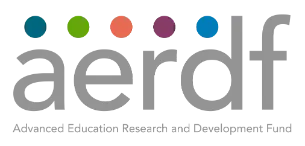
Our Program
Our Program
Reading Reimagined engages in Advanced Inclusive Research and Development (R&D) grounded in the lived experiences of the learners most impacted by inequity alongside the educators and caregivers who support them. We do this in part by examining how all elements of reading instruction and social development must interact to support students to reach their full potential as readers.
Reading Reimagined builds on the rich base of reading research and focuses its Advanced Inclusive R&D on three core areas that impact student reading, but need ongoing exploration of research-based approaches to instruction. The learning from these efforts will be made widely available and integrated into practical, technology-enabled, and integrated tools:
Define
We are working to define the decoding threshold to better maximize impact of our resources. We are developing insights into how the decoding threshold affects the foundational literacy development of Black, Latino, Native American, and all students experiencing poverty. And we are building field awareness of the decoding threshold and the associated solutions.
Measure
We are building time and cost efficient assessments to screen, diagnose, and monitor foundational skill progress for students in K-12. This data equips us with information to raise awareness of the challenge and our progress toward solving it. These assessments will be able to technologically scale and integrate with other solutions.
Intervene
We are creating a developmentally appropriate intervention blueprint with aligned and effective tools, using validated strategies that leverage the unique characteristics that most fuel literacy learning. This includes building instructional tools via technology ready for scale that integrate assessment and instruction.
For a detailed explanation of our approach to Advanced Inclusive R&D and the research base supporting our first efforts, read our concept paper “Reading Reimagined: A New Inclusive Research and Development Initiative”.
Get updates about our work
What is the decoding threshold? How can decoding challenges block reading comprehension in older students?
Our work explores ways to end illiteracy and better support older students with foundational reading skills. This builds on the emerging understanding of the decoding threshold from research by Wang et al. (2019) and Magliano et al. (2023) which elucidates the relationship between comprehension and decoding for struggling students. More students than researchers previously thought struggle to decode or, use their knowledge of letter sounds to sound out complex, multisyllabic words. Our program focuses on creating solutions to help older students with insufficient decoding skills that block them from comprehending grade-level text, which is essential for learning.
By shifting our assessment strategy to assess both basic and more sophisticated decoding skills like morphology in later grades, we hypothesize that we can tailor instruction for students under the decoding threshold and improve their reading comprehension outcomes. This new assessment data will support teachers in understanding where their students are.
For more information about the decoding threshold, please refer to the following research:
- Paige, D. D., Smith, G. S., Rasinski, T. V., Rupley, W. H., Magpuri-Lavell, T., & Nichols, W. D. (2019). A path analytic model linking foundational skills to grade 3 state reading achievement. The Journal of Educational Research, 112(1), 110-120.
- Sabatini, J., Wang, Z., & O’Reilly, T. (2019). Relating reading comprehension to oral reading performance in the NAEP fourth‐grade special study of oral reading. Reading Research Quarterly, 54(2), 253-271.
- Wang, Z., Sabatini, J., O’reilly, T., & Weeks, J. (2019). Decoding and reading comprehension: A test of the decoding threshold hypothesis. Journal of Educational Psychology, 111(3), 387.
- White, T. G., Sabatini, J. P., & White, S. (2021). What Does “Below Basic” Mean on NAEP Reading?. Educational Researcher, 50(8), 570-573.
